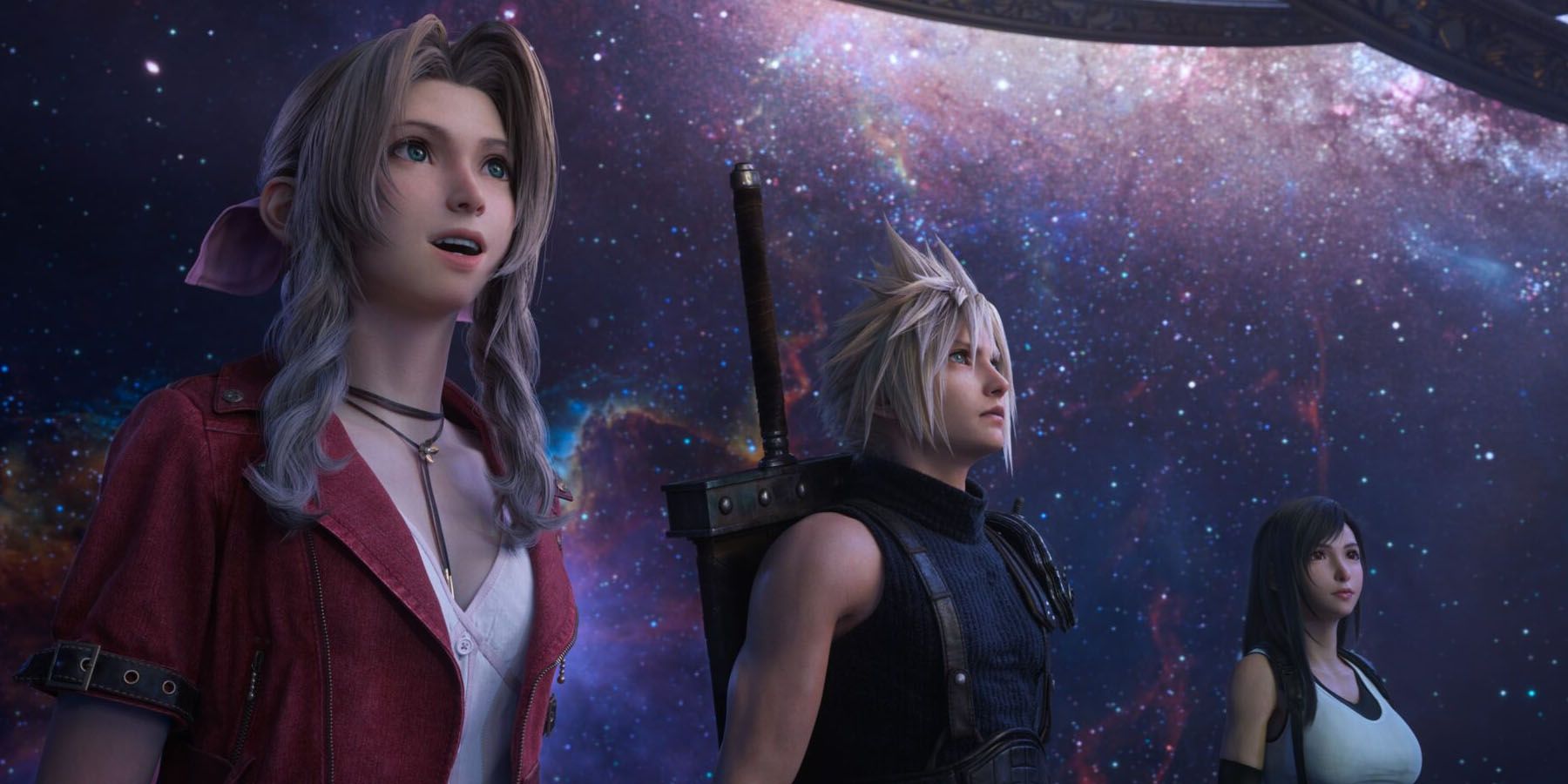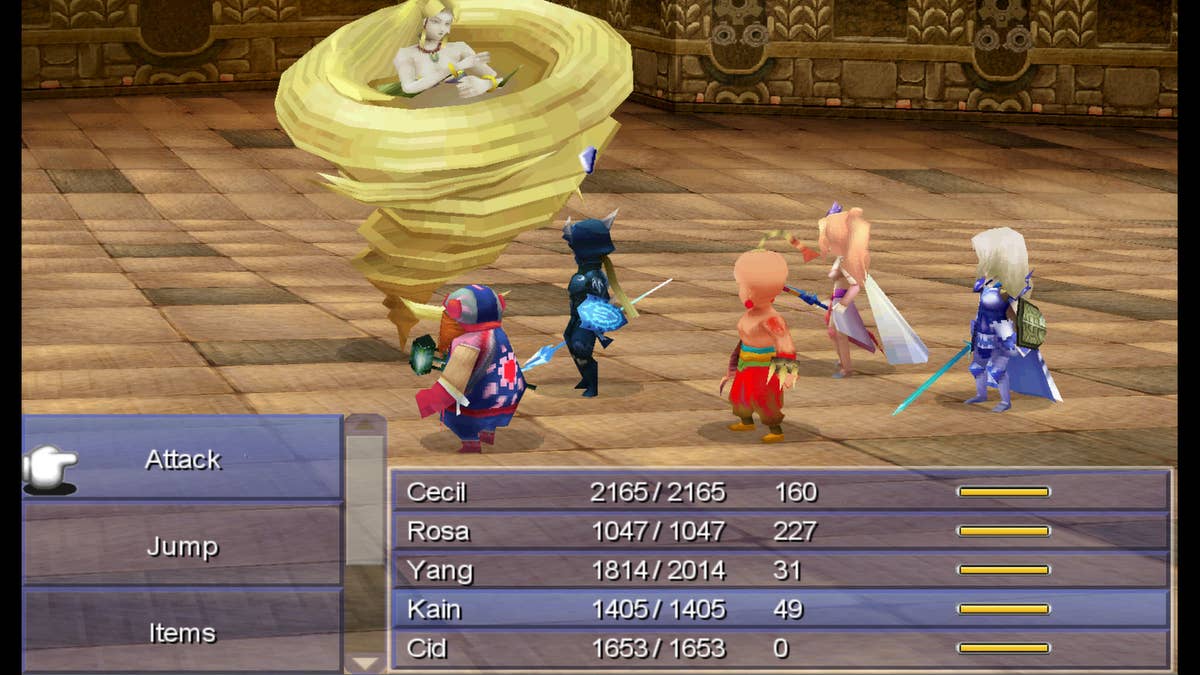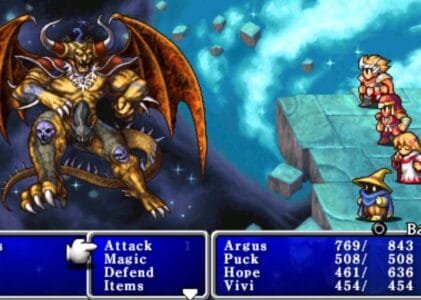The Final Fantasy series, developed by Square Enix (formerly Square Co.), is a monumental name in the world of video gaming. Since its inception in 1987, the series has evolved into a behemoth of the role-playing genre, captivating players with its rich narratives, groundbreaking visuals, and innovative gameplay mechanics. This article delves into what makes Final Fantasy a unique jewel in the gaming industry, exploring its evolution, thematic depth, and cultural impact.
Origins and Evolution
Final Fantasy was born from the desperation of a failing company and the vision of Hironobu Sakaguchi. Initially conceived as his last attempt in the gaming industry—hence the name “Final” Fantasy—the game was a success, saving Square Co. from bankruptcy and setting the stage for one of the longest-running series in gaming history. Over the years, Final Fantasy has grown through its numerous installments, each one building on its predecessors while introducing its own innovations.
The series is known for not adhering to a single storyline or set of characters. Each installment is typically set in a different world with a new cast, although there are thematic and aesthetic connections that bridge the games together. This approach allows each game to explore new concepts and story arcs, making each title a fresh experience for players. The original “Final Fantasy” game was released on the Nintendo Entertainment System (NES) in 1987

Gameplay Innovation
One of the hallmarks of Final Fantasy is its constant evolution in gameplay. The series began with turn-based combat, a staple of RPGs of the time, but has since experimented with various systems to keep the gameplay fresh and engaging. For instance, Final Fantasy IV introduced the Active Time Battle (ATB) system, adding a real-time element to the turn-based format, which has been adapted and modified in subsequent titles.
Further innovations include the Materia system of Final Fantasy VII, which allows players to customize characters’ abilities through equippable gems, and the Junction system of Final Fantasy VIII, where players can link spells to character attributes for customization. The gambit system of Final Fantasy XII allowed players to pre-set behaviors for party members, enabling more strategic control in battles.
Development and Innovation Across the Final Fantasy Series
The Final Fantasy series has been a vanguard of innovation within the role-playing genre, continuously evolving and adapting across its storied history. Each installment has not only pushed forward the technological capabilities of gaming hardware but has also explored new narrative techniques and gameplay mechanics. This section delves into how the Final Fantasy games have developed and innovated from one title to the next, marking significant milestones in gaming.
Pioneering Gameplay Systems
One of the most distinctive features of the Final Fantasy series is its willingness to reinvent its gameplay mechanics with each new installment. The series started with relatively simple turn-based combat systems but quickly began to introduce innovations that would define and sometimes divide its fanbase.
- Active Time Battle (ATB) System: Introduced in Final Fantasy IV, the ATB system was a revolutionary change that blended turn-based mechanics with real-time elements. This system required players to make strategic decisions quickly, as each character’s ability to act was governed by a time gauge, adding a layer of urgency and dynamism to combat.
- Materia System: Final Fantasy VII implemented the Materia system, which allowed players to customize characters’ abilities through equippable gems that could be leveled up and modified. This system added a deep level of customization and strategic planning, greatly enhancing replay value.
- Sphere Grid and License Board: Final Fantasy X and XII brought the Sphere Grid and License Board, respectively. These systems replaced traditional leveling up with more spatial and strategic methods of character development, where players could decide specific paths for character skills and attributes, tailoring party members more distinctly to their play style.
Technological Advancements

Each Final Fantasy game has also been a reflection of its technological era, often pushing the capabilities of the gaming systems available at the time.
- Pre-rendered Backgrounds and FMVs: The shift to the PlayStation with Final Fantasy VII allowed the use of pre-rendered backgrounds and full-motion videos, which dramatically enhanced the game’s visual storytelling and atmospheric depth. These technologies made the game worlds more immersive and visually compelling than ever before.
- Voice Acting and High-Definition Graphics: Moving into the era of the PlayStation 2 and beyond, games like Final Fantasy X and XIII began to incorporate full voice acting and high-definition graphics. The inclusion of voice acting brought the characters to life in new ways, making the narrative more engaging and emotionally resonant.
- Open World Exploration: Final Fantasy XV represented a significant shift towards open-world gameplay, a stark contrast to the more linear narratives of some previous titles. This allowed for a level of exploration and player agency that had not been seen before in the series.
Narrative and Storytelling Innovations
Narratively, Final Fantasy has always been at the forefront of the RPG genre, with each game building upon the last to deliver more complex and engaging stories.
- Branching Narratives and Multiple Endings: While Final Fantasy generally maintained a linear story path in its early iterations, later titles experimented with branching narratives and multiple endings. For example, Final Fantasy X-2 offered a more non-linear approach with multiple story paths and over a dozen different endings, depending on the player’s choices and actions throughout the game.
- Integration of Cinematic Cutscenes: The use of cinematic cutscenes grew progressively more sophisticated, with titles like Final Fantasy VIII and IX using them to enhance key narrative moments. This integration helped set a new standard for how story could be delivered in video games, making each game feel like an interactive movie.
Artistic and Narrative Depth
The Final Fantasy series is revered for its story-driven gameplay and deep narrative structures. Each game weaves complex worlds filled with rich lore and history, where moral ambiguities and philosophical dilemmas abound. Themes like conflict, love, sacrifice, and the struggle against fate are recurrent, offering players not just entertainment but also moments of profound introspection.
Visually, the series has been at the forefront of the industry. From the pixel art of the early games to the full-motion videos introduced in Final Fantasy VII, and onto the near-cinematic quality of recent entries, the visual evolution of the series has paralleled advancements in gaming technology. This commitment to high-quality graphics has not only defined the aesthetic standards for RPGs but also showcased the potential of video games as an art form.
Artistic Style of Final Fantasy: A Blend of Fantasy and Reality
The artistic style of the Final Fantasy series is a pivotal aspect that not only enhances the immersive experience of each game but also sets the series apart in the gaming industry. Through its long history, the series has showcased a distinct visual flair that blends fantastical elements with intricate details, creating worlds that are simultaneously otherworldly and intimately relatable.

Early Beginnings and Evolution
In the initial entries of the series, the limitations of hardware restricted the visual complexity, but even then, Final Fantasy distinguished itself with detailed sprite work and imaginative settings. The early games relied heavily on pixel art, and despite the constraints, they were able to convey a rich variety of themes and emotions. With each new game, as technology advanced, so did the artistic ambition of the series.
Influence of Key Artists
The artistic evolution of Final Fantasy is deeply tied to the contributions of its key artists, Yoshitaka Amano and Tetsuya Nomura. Amano, who worked on the series from its inception, is known for his ethereal and elaborate art style, characterized by wispy, delicate lines and a dreamlike quality that perfectly complemented the fantastical themes of the games. His designs for characters and environments are iconic, imbuing the series with a sense of elegance and otherworldliness.
Tetsuya Nomura took over as the main character designer starting with Final Fantasy VII. Nomura’s style is markedly different, featuring more contemporary and edgy designs that reflect modern aesthetics and trends. His characters often boast a more robust and dynamic appearance, which resonated well with the series’ shift towards more realistic and detailed 3D graphics. Nomura’s influence is particularly evident in the later games, where the visuals became a central selling point, showcasing Square Enix’s cutting-edge graphics and animation technology.
Technological Advancements and Visual Impact
The transition to 3D with Final Fantasy VII marked a significant shift in the series’ visual presentation. This game, along with its successors, began to utilize the full potential of modern gaming consoles, featuring richly detailed environments and character models that were groundbreaking at the time of their release. The use of full-motion video (FMV) sequences elevated the narrative presentation, allowing for cinematic storytelling that was previously unattainable.
With each subsequent release, the series has continued to push the boundaries of technology and art. For example, Final Fantasy X introduced fully voiced characters and used facial motion capture to enhance emotional expressions, bringing characters to life in unprecedented ways. Meanwhile, Final Fantasy XV and Final Fantasy VII Remake further advanced the integration of realistic environments and characters, achieving a level of detail and visual fidelity that closely mirrors reality.

Artistic Themes and Cultural References
The art of Final Fantasy is not only notable for its technical achievements but also for its thematic depth. The series often incorporates elements from various cultures, mythologies, and historical periods, creating a rich tapestry that adds depth and authenticity to its fantasy worlds. This eclectic approach is evident in the architectural styles of the buildings, the design of clothing and armor, and even the creatures that inhabit the world.
Moreover, the series frequently explores the juxtaposition of technology and nature, a theme that is visually represented in many of the games. Industrial elements are often contrasted with lush landscapes, symbolizing the games’ recurring motifs of conflict between human advancement and environmental preservation.
Cultural Impact and Legacy
Final Fantasy has left an indelible mark on pop culture. Iconic elements like character designs, especially those by artist Yoshitaka Amano and later Tetsuya Nomura, have influenced fashion and visual arts. The music of Final Fantasy, composed primarily by Nobuo Uematsu, is among the most recognized in gaming, with concerts performed worldwide.
Moreover, the series has had a significant impact on gaming culture and has been a formative influence on narrative and technical aspects of game development. Final Fantasy VII, in particular, is credited with popularizing RPGs on a global scale, demonstrating the viability of epic storytelling in video games.
The Main Final Fantasy Games
The Final Fantasy series, developed by Square Enix (formerly Square Co.), is a cornerstone of the role-playing game genre and boasts a significant number of mainline entries, each contributing unique elements to the overarching brand. Below is a detailed list of the main series games, including their release years and a brief note on what set each apart:
Final Fantasy (1987) – This game set the groundwork with its medieval fantasy theme and turn-based combat system. The plot revolves around the Warriors of Light who seek to restore the crystals to their former luster, a common theme in subsequent titles.- Final Fantasy II (1988) – Diverging from traditional leveling systems, character progression in this game is based on activity: using a particular type of weapon or magic improves proficiency in it. The game also introduced a more developed narrative with emotional character arcs.
- Final Fantasy III (1990) – This title was the first to implement the Job System, allowing characters to change class and abilities, adding a significant strategic layer to gameplay and character development. The game was originally only released in Japan and later remade for international audiences on newer platforms.
- Final Fantasy IV (1991) – Known for introducing the ATB system, this game also had a strong emphasis on narrative, featuring a character-driven story about redemption, love, and betrayal. It was one of the first RPGs to include extensive in-game cutscenes.
- Final Fantasy V (1992) – Expanded the Job System with more classes and customization options, allowing for a higher degree of strategic planning. The story focuses on a group of adventurers trying to prevent the destruction of their world’s crystals.
- Final Fantasy VI (1994) – Widely acclaimed for its storytelling and character development, this title featured an ensemble cast and a shift towards more complex emotional themes. It’s also noted for its steampunk-inspired setting.
- Final Fantasy VII (1997) – A breakthrough in graphic quality with pre-rendered backgrounds and full-motion video. The game features an expansive story, focusing on eco-terrorism, identity, and survival against a corporate megapower. It became iconic for its characters, notably Cloud Strife and Sephiroth.
- Final Fantasy VIII (1999) – Introduced a novel “Junction” system for magic and character enhancement, alongside a love story between the main character, Squall Leonhart, and Rinoa Heartilly. The game also experimented with a more realistic visual style.
- Final Fantasy IX (2000) – A return to the series’ roots with a medieval setting and classic fantasy elements. The game emphasizes adventure and exploration, along with a nostalgic homage to the earlier games in the series.
- Final Fantasy X (2001) – Marked the series’ transition into full 3D environments and was the first to feature voice acting, enhancing narrative depth. The game introduced the Sphere Grid system for character development and brought a new level of emotional storytelling.
- Final Fantasy XI (2002) – As the series’ first MMORPG, it featured a vast world with real-time battles, focusing on collaborative play across different nations and races in the world of Vana’diel.
- Final Fantasy XII (2006) – Set in the familiar world of Ivalice, this game introduced the Gambit system, which allowed players to pre-set party member actions, creating a hybrid of real-time and strategic combat. Its story delves into themes of war, freedom, and the complexities of power.
- Final Fantasy XIII (2009) – Known for its linear gameplay and narrative structure, it introduced the Paradigm system, which allows players to switch between predefined combat roles dynamically. The game focuses on the fates of the l’Cie and the crystalline world of Cocoon.
- Final Fantasy XIV (2010, relaunched 2013) – Initially panned due to numerous issues, it was completely revamped in A Realm Reborn, which corrected earlier mistakes and expanded into a fully-fledged and highly popular MMORPG praised for its engaging story and community-focused features.
- Final Fantasy XV (2016) – This entry is noted for its open-world exploration and action-based combat system. It follows the road trip of Prince Noctis and his friends as they embark on a journey across the continent to reclaim Noctis’s throne.

Final Fantasy
Final Fantasy remains a pioneering series at the forefront of the RPG genre due to its willingness to innovate and its respect for storytelling. With each new entry, it challenges its formula, introducing new elements while refining old ones, making each installment a critical and commercial success.
The series’ commitment to high production values, deep, engaging gameplay, and powerful storytelling continues to set it apart in the video gaming industry. As it evolves, Final Fantasy carries forward a legacy of innovation, continually pushing the boundaries of what video games can be. Whether through its impactful narratives, evolving gameplay mechanics, or stunning visual design, Final Fantasy consistently offers a unique, immersive experience that resonates with audiences around the world.

